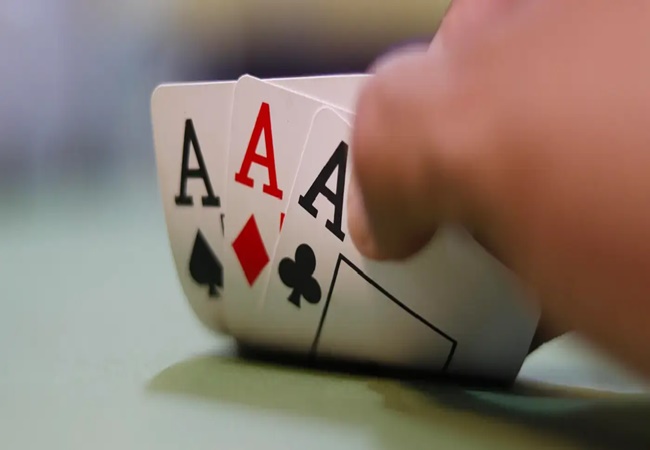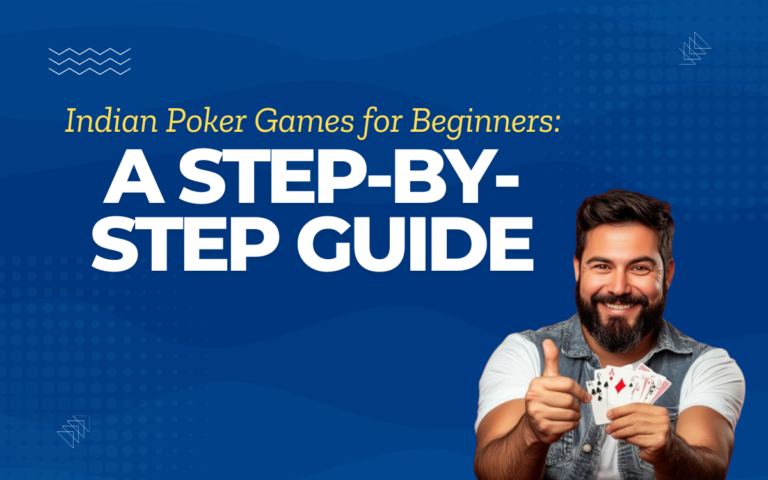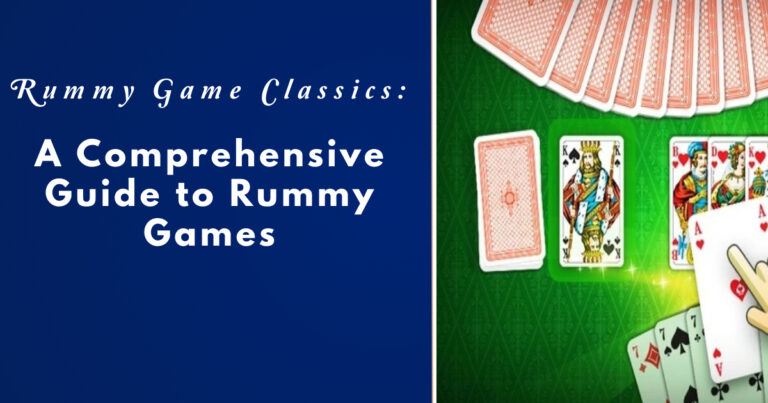Adapting Your Strategy in Teen Patti: Early Game vs. Late Game
Teen Patti strategy, often referred to as Indian Poker, is a popular card game that blends luck with skill. The game involves three cards dealt to each player, followed by rounds of betting. While luck determines the cards you receive, skillful play and strategic adaptations to different phases of the game can significantly increase your chances of winning. A critical factor that separates novice players from experienced ones is understanding how to adjust strategies between the early and late stages of the game. Let’s delve into how you can adapt your approach in Teen Patti Stars based on whether you are in the early game or the late game.

Understanding the Phases in Teen Patti
Before we dive into specific strategies, it’s essential to understand what constitutes the “early game” and “late game” in Teen Patti.
- Early Game: This phase includes the initial rounds of Rummy games when players are just starting to place their bets. It is characterized by uncertainty because players have limited information about the strength of other players’ hands. In this stage, many players tend to play conservatively since the stakes are relatively low, and the aim is to gauge the situation.
- Late Game: This phase begins when there are fewer players left, and the stakes have increased. The remaining players have a clearer idea of the potential strength of each other’s hands based on their betting patterns. This is when calculated risks can pay off, and players start making moves based on more than just the strength of their hand—reading other players and playing psychological games become more crucial in an effective Teen Patti strategy.
The dynamics of Teen Patti change significantly between these two phases, and so should your Teen Patti strategy. Here’s how you can adapt to maximize your chances of winning.
Early Game Strategies
In the early rounds, you need to focus on gathering as much information as possible about your opponents while maintaining a cautious approach. Here are some strategic considerations for this phase:
- Play Conservatively: During the early game, it is usually wise to play tight and avoid placing large bets unless you have a strong hand as part of a solid Teen Patti strategy (such as a Trail/Set, Pure Sequence, or Sequence). The purpose here is to keep your losses to a minimum while understanding how your opponents play. Many players will try to bluff in the early stages, so it is essential not to be easily lured into making high bets without strong cards.
- Observe Betting Patterns: Since the game has just started, you don’t have much information to work with. Take this opportunity to observe your opponents’ tendencies, as this can inform your overall Teen Patti strategy. Some players may be more aggressive, betting high amounts even without good hands, while others may only bet big when they have a strong hand. Noting these patterns can give you an edge in the late game when it’s time to make critical decisions, especially when understanding the mathematics in rummy.
- Minimize Bluffing: While bluffing is a vital aspect of Teen Patti, the early game is not the best time to employ this tactic extensively. With many players still in the game, your bluff is more likely to be called. Additionally, the stakes are lower, meaning your potential rewards from successful bluffs are also lower. As part of an effective Teen Patti strategy, save bluffing for when it will have a more significant impact on the outcome.
- Playing Blind or Seen: In Teen Patti, you can choose to play “blind” (without looking at your cards) or “seen” (after looking at your cards). In the early game, playing blind can be an effective strategy, as it adds an element of unpredictability to your play. Blind players can often force seen players to fold due to the uncertainty of not knowing the strength of the opponent’s hand. However, don’t overuse this tactic as it can become predictable.
- Avoid Big Risks: Since the game is still in its early stages, there’s no need to take big risks as part of your Teen Patti strategy. Even if you have a reasonably strong hand, it may not be worth going all-in at this point. The goal is to stay in the game and gather as much information as possible, using effective bankroll management to avoid overcommitting your chips.
Transitioning to the Late Game
As the game progresses and fewer players remain, the stakes naturally become higher. The focus shifts from merely playing your cards to outplaying your opponents. Adapting your Teen Patti strategy is crucial to capitalize on the information you have gathered so far.

Late Game Strategies
In the late game, the situation is entirely different. The higher stakes mean every decision carries more weight, and players become more strategic. Here’s how you can navigate this stage effectively:
- Play Aggressively When Necessary: In the late game, it is often beneficial to take a more aggressive approach, especially if you have observed that your opponents tend to fold under pressure, which can be an effective Teen Patti strategy. If you have a strong hand or even a moderately strong hand, consider increasing the size of your bets to pressure your opponents into folding. The objective here is to either win the pot directly or set yourself up for a larger payoff if your opponents decide to continue.
- Utilize Bluffing Effectively: The late game is when bluffing can become a powerful tool. If you have identified players who are hesitant to call large bets, you can exploit this by making strategic bluffs. However, bluffing requires a delicate balance—if used too often, your opponents may catch on, and the tactic will lose its effectiveness. Make sure your bluffs are believable and consistent with your previous betting patterns.
- Reading Opponents: By the late game, you should have a good understanding of your opponents’ behaviors and tendencies, which will enhance your Teen Patti strategy. Use this information to your advantage. For instance, if a usually conservative player suddenly becomes aggressive, it might indicate that they have a strong hand. On the other hand, an aggressive player who suddenly plays conservatively may be signaling weakness, which could influence your long-term strategies.
- Changing Gears: To keep your opponents guessing, consider switching up your playing style in the late game. If you’ve been playing conservatively, become more aggressive, and vice versa. This sudden change in behavior can confuse your opponents and prevent them from accurately predicting your actions.
- Manage Your Betting Wisely: As the stakes rise, so does the importance of managing your chips. Avoid going all-in without a solid reason or a strong hand. Instead, aim to make incremental increases in your bets to build the pot without risking elimination, a key aspect of a well-planned Teen Patti strategy. Conversely, if you sense that your opponents are hesitant, you can go for bigger bets to force a fold.
- Playing “Seen” vs. “Blind”: In the late game, it is generally better to play “seen” because you need to make more informed decisions. However, if you are confident in your ability to read your opponents, playing blind can still be an effective tactic, especially when trying to manipulate your opponents into making mistakes. The decision to play seen or blind should depend on the information gathered earlier and your current read on the situation, both of which are important factors in your Teen Patti strategy.
Navigating Psychological Elements in Both Phases
Teen Patti is not just a game of cards; it’s also a game of psychology. Understanding the psychological aspects of your opponents can be a game-changer.
- Early Game Psychology: In the early game, players are usually more cautious. Use this to your advantage by appearing to play conservatively, then making a sudden, unexpected bet to test the waters, an approach often seen in a smart Teen Patti strategy. This approach can force hesitant players to fold or reveal the strength of their hands.
- Late Game Psychology: In the late game, players may be more prone to “tilt,” a state of emotional agitation caused by previous losses or near wins. If you notice a player acting erratically or making questionable decisions, consider exploiting this by placing larger bets to force them into more mistakes.
- Body Language and Tells (in live games): If playing Teen Patti in person, paying attention to body language can provide clues about an opponent’s hand strength. Nervous behavior, sudden changes in posture, or a shift in tone could indicate a bluff or strong hand. In online versions, the equivalent is to observe changes in betting speed and style, which can be crucial elements of an effective Teen Patti strategy.
Conclusion: Teen Patti Strategy
Adapting your strategy between the early and late phases of Teen Patti, while maintaining patience and focus, is crucial for maximizing your chances of winning. In the early game, play conservatively, gather information, and avoid unnecessary risks. In the late game, become more aggressive, utilize bluffing tactics, and leverage the information gathered to outplay your opponents. By understanding the different dynamics of these two phases, you can make more informed decisions, thereby increasing your success in Teen Patti through a well-crafted Teen Patti strategy. The ability to adapt and shift strategies is what truly distinguishes a skilled Teen Patti player from a novice.








